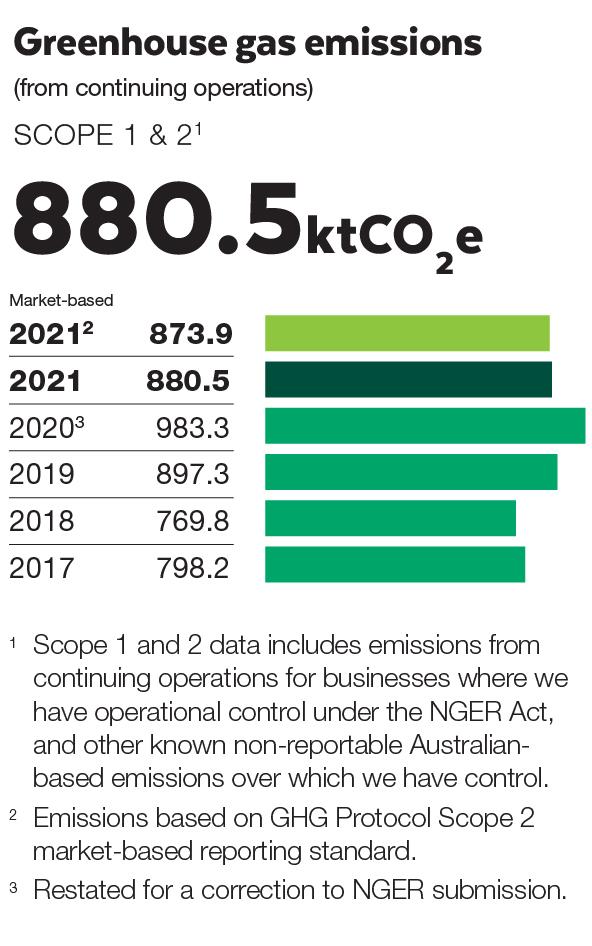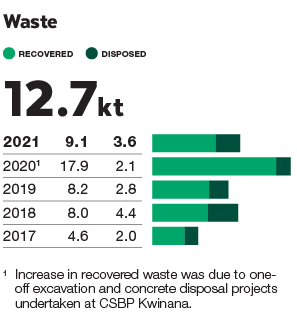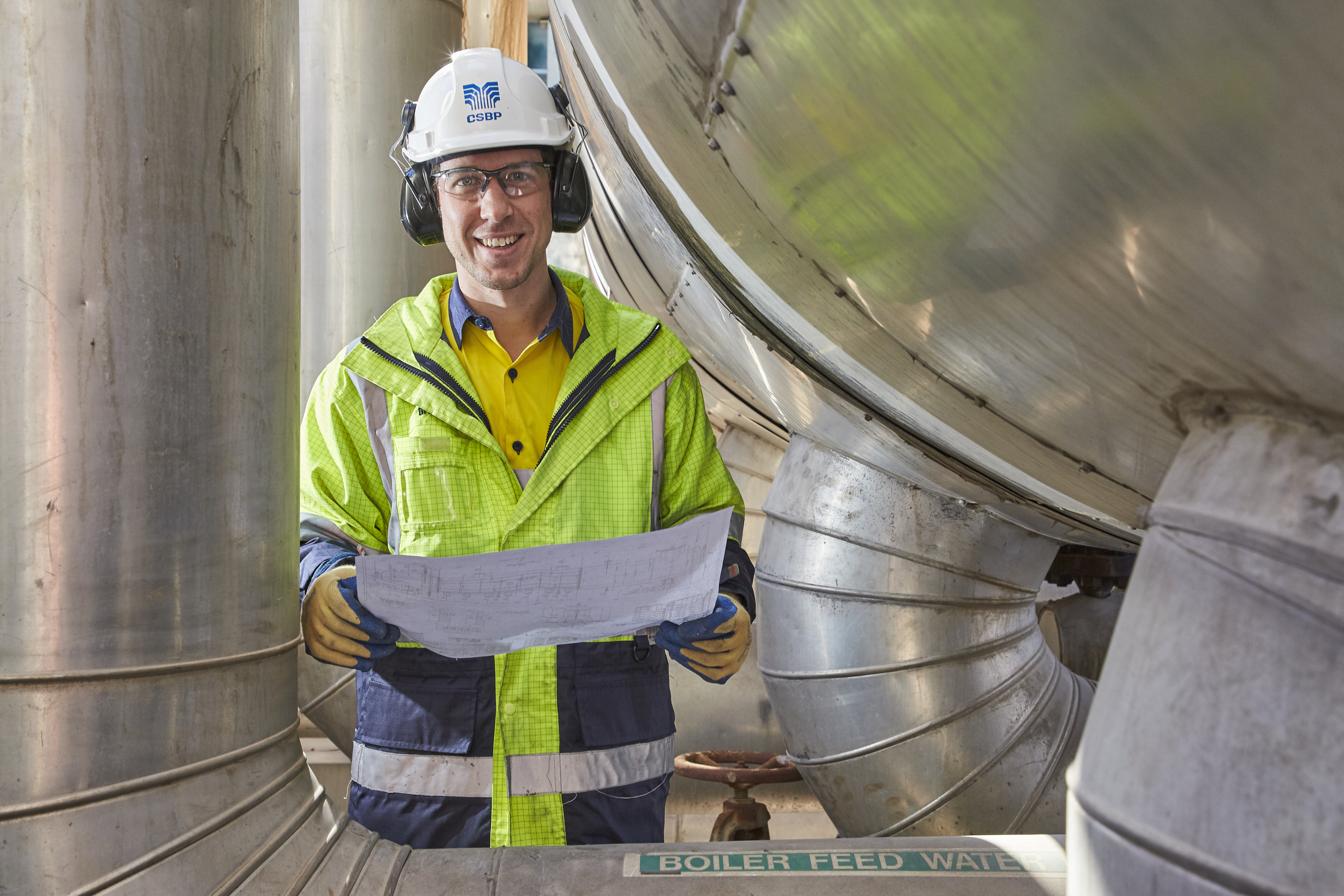WesCEF - Environmental stewardship
Protecting the natural environment remains one of WesCEF’s priorities and ensures the future sustainability of its operations. WesCEF recognises its businesses have an important role to play in addressing legacy waste and climate change, and its actions may deliver economic, social and environmental benefits over the long term.
A continuing focus area in the 2021 financial year was legacy waste contamination investigations and remediation activities, including at CSBP sites in Albany, Bunbury, Esperance, Geraldton and Kwinana. Site management plans have been developed for all sites and an integrity strategy developed for the inspection and repair of bund, sump and drain assets to reduce the risk of future groundwater contamination. Further investigation is required at the Kwinana site to inform future actions. These investigations and strategies are not only important in mitigating future risks, but they contribute to WesCEF’s considerable environmental knowledge and understanding of local areas and how the business can continue to protect them.
WesCEF developed its Climate Change Policy this year, as part of its aspiration to achieve net zero Scope 1 and 2 emissions by 2050.
To ensure climate change is managed across WesCEF’s businesses, a Climate Opportunities team has been formed. This team will lead the organisation’s development of a roadmap to net zero Scope 1 and Scope 2 emissions, including interim targets and milestones.
Continuing from recent years, WesCEF’s Scope 3 emissions reporting will be further expanded to help the business understand its complete carbon footprint.
WesCEF is committed to investment in research, technology, renewable energy opportunities and ongoing energy efficiency improvements. The value of partnerships with research institutions and industry is acknowledged and WesCEF is a founding member of the Australian Energy Transition Initiative.
Continued investment occurs at CSBP Kwinana to optimise the abatement effectiveness of existing catalysts in its nitric acid plants. This technology reduces nitrous oxide emissions (which have a global warming potential 265 times higher than carbon dioxide) by up to 85 per cent. Nitric acid is used in the production of ammonium nitrate (AN) and WesCEF’s commitment to maintaining optimal performance of this technology reduces the carbon intensity per tonne of AN produced. This focus on emissions intensity reduction demonstrates alignment with targets established as part of the Wesfarmers Sustainability-Linked Loan and the Wesfarmers Sustainability-Linked Bonds. These sustainability-linked financial instruments, effective from 2020 and 2021 respectively, are the first in Australia to be underpinned by environmental, social and governance targets.



